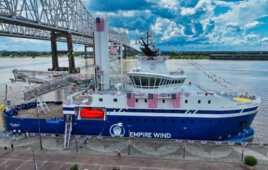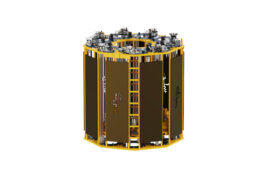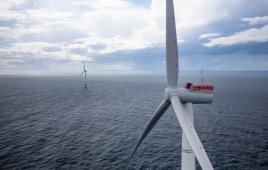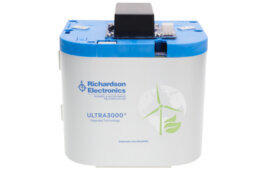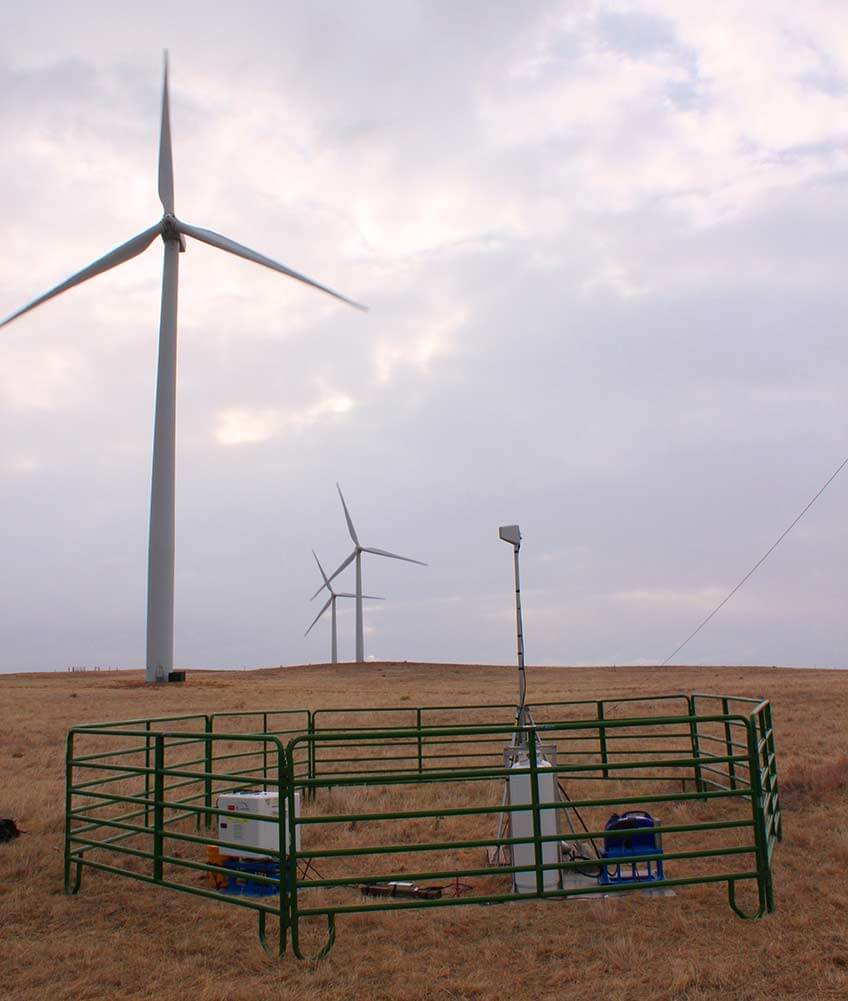
NREL’s experimental design for the wake steering field campaign incorporated lidar measurements of atmospheric conditions. (Photo by Andrew Scholbrock; NREL)
With funding from the Department of Energy, the National Renewable Energy Lab (NREL) has developed the FLOw Redirection and Induction in Steady State (FLORIS) model to help wind plant operators optimize turbine interactions. This open-source software lets users design controllers that can choose the best yaw angles for wind-turbine operation under different conditions. (Read more here.)
Over the past few years, NREL researchers have conducted several small-scale campaigns to validate FLORIS predictions. One and two-turbine studies at NREL’s National Wind Technology Center in Boulder, Colorado, and the Scaled Wind Farm Technology (SWiFT) facility in Lubbock, Texas, contributed to FLORIS updates.
Another single-turbine experiment at a commercial offshore facility provided additional insights into optimal configurations.
“There is no shortage of interest in applying this approach,” said NREL Senior Engineer Paul Fleming, who leads the laboratory’s wind farm control research. “But before we can see controls adopted at scale, the industry needs to see field trials that are conducted in realistic environments.”
To fill this gap, Fleming and colleagues recently designed a study to bring increased clarity to wind plant control research. The team incorporated a range of sensing equipment — including a ground-based lidar, meteorological tower, and two sodars — at subsection of the Peetz Wind Energy Center during the three-month-long field study.
“Our experimental setup used specific instrumentation to gather additional data points, which greatly increased our ability to analyze the accuracy of simulated predictions,” Fleming said.
Filed Under: News
